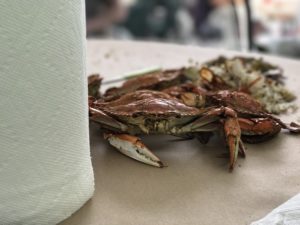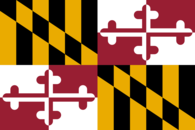
There are few things as quintessentially Maryland than a summer’s day with a newspaper-covered picnic table covered with a pile of crabs plucked fresh from the Chesapeake Bay.
There are few things as quintessentially Maryland than a summer’s day with a newspaper-covered picnic table covered with a pile of crabs plucked fresh from the Chesapeake Bay. This time-honored tradition of crustacean consumption isn’t as old as you might think, but it quickly became the pride of the state. If you’re visiting Maryland, or just haven’t been to your own crab feast, there are some terms you should know before you go.
Mustard
Whether or not to eat the mustard is a matter of hot debate in the world of crab eating. While most scrape it away, the yellow to green mustard is often added to pre-packed crab to enhance the flavor. While commonly called mustard, it’s actual name is tomalley, and it is the fat of the crab, hence the intense flavor.
Roe
In female crabs you may find that there is a small amount of crab roe – or eggs – when steamed these solidify and are considered quite tasty. You’ll often find the bright orange eggs topping Asian cuisines like sushi and crab soup dumplings.
Apron
Depending on the sex of the crab the apron will have a different size and appearance. Found on the belly, the apron is a flap that terminates at a point. This is also one of the best entrance points as you’re cracking into them. Male crabs, called Jimmy’s, have a long narrow point. Male crabs are the favorite as they are larger in size and higher catch rates are permitted. Female crabs, called Sally or Sook, are often smaller and their apron forms a triangle when young and an upside-down U when mature. Female crab catching is far more regulated as they are needed to repopulate.
Size Classes
When it comes to your crabs, size matters. Crab populations are always under threat which means that there is a significant need to prevent overfishing. There are size regulations that dictate how large a crab must be to be a keeper. Additionally, female crabs with fertilized eggs (Sook’s) must be thrown back when caught. When it comes to eating, there are no industry standards, but in general, you will find that jumbos are larger than six inches across. Different size categories include medium, large, and small. While smalls tend to be less expensive, they also encourage poor fishing habits. When possible, sticking to lower amounts of larger sizes is better for the environment and your enjoyment.
COME AND SEE US AT STATE FARE!
State Fare is conveniently located at 748 Frederick Road in Catonsville, Maryland. Our extensive menu has a variety of unique options for breakfast, lunch, and dinner that are sure to please even the pickiest of eaters. We even have many vegetarian, vegan, and gluten-free options! Our fully-stocked bar holds a huge collection of bourbons and whiskeys, as well as several different wines. On tap, we have several different local craft beers to show off the best beer that Maryland has to offer. We’re open every day from 8 am until 2 am, so make your reservation or just stop in and see us today!
Follow our blog and Facebook to keep up with all of the latest news!
